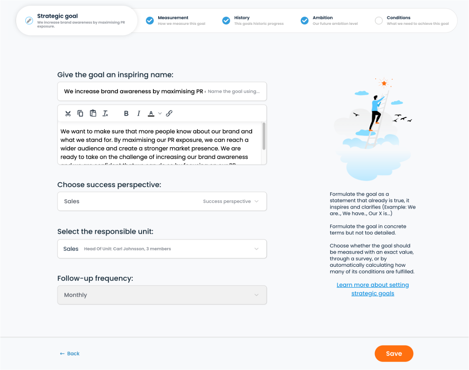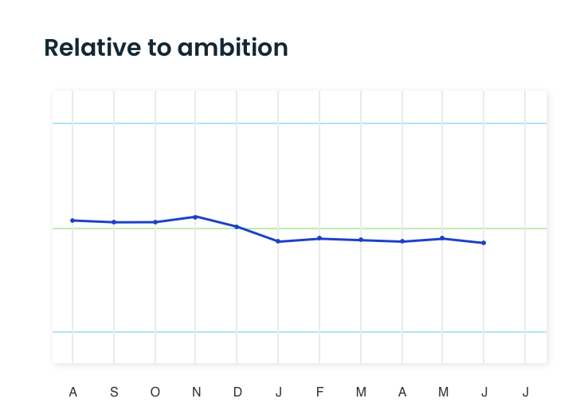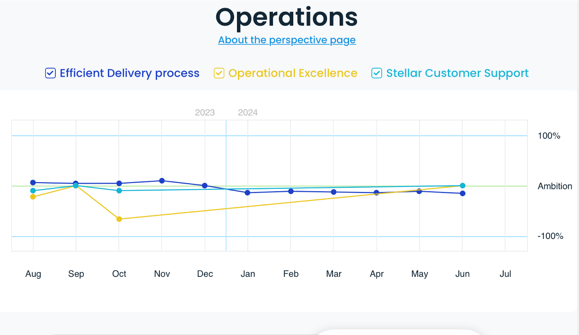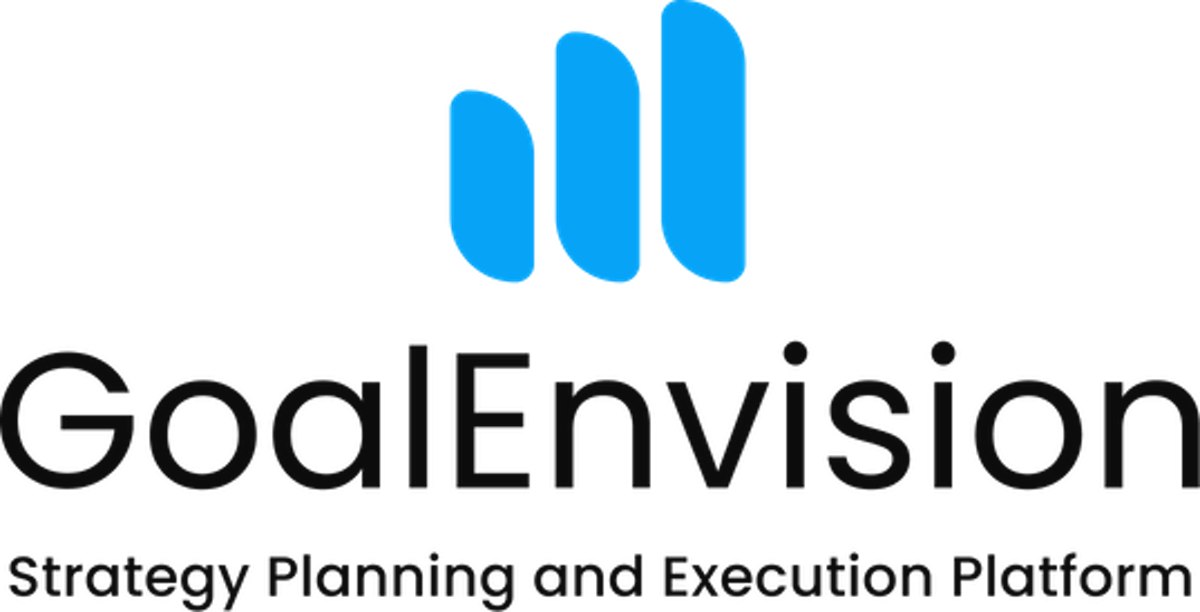How to set the ambition level in GoalEnvision
Share this article
Ambition level is a powerful tool in GoalEnvision that helps you plan for future results by setting specific goals for different periods, usually monthly. Here we go through how to set up and monitor the ambition level in GoalEnvision using some example images from the platform.
What is the ambition level?
Ambition is a generic term for any way of planning for the future in terms of expected future outcomes broken down into periods. In economics this is often referred to as a budget or forecast, but in other fields it may have other names. For example, in sales it might be sales targets, in marketing it might be promotional targets, and in HR it might be employee index targets. Ambition levels provide a clear picture of what is expected to be achieved within a certain timeframe, allowing for close monitoring and adjustment of strategies if necessary.
1. Set the strategic goal
First, you need to define your strategic goal. This is the basis for your ambition levels and helps you stay focused on what is really important for your organisation.

Figure 1: Here we set out our strategic goals to optimise our internal processes for greater efficiency and productivity.
2. Set your ambition level
Having defined your strategic goal, you can now set the level of ambition for this goal. You can set these levels as absolute numbers, for individual periods or by using a smooth curve.

Figure 2: Here we set the level of ambition for the chosen goal. You can also set upper and lower limits to get a clearer picture of your goals.
3. Edit ambition level in tabular form
For a more detailed setting, you can edit the ambition levels in a table. This gives you an overview of all periods and makes it easy to adjust the levels according to your needs.ehov.

Figure 3: By editing the ambition levels in tabular form, you can easily adjust your goals for each month and get a clear picture of your plans for the future.
4. Monitor and compare results
Once the ambition levels are set, the next step is to monitor and compare the actual results with the set targets. This will help you to identify deviations and take corrective action if necessary.
It is also important to analyse historical data to understand past trends and adjust future ambition levels accordingly. GoalEnvision offers tools to review historical data and improve future goal planning.

Figure 4: Here we compare our actual results with the ambition levels to see how well we are achieving our goals.
GoalEnvision's magic chart
A unique feature of GoalEnvision is the magic chart, where all goals are converted into percentages so that they can be compared with each other. This chart shows all the goals within the current perspective at the same time, giving an overview of how different goals perform in relation to each other. The green line in the centre of the graph represents the level of ambition, making it easy to see which targets are above or below expectations.

Figure 5: The magic chart shows all the strategic goals within the current perspective, compared to the green ambition level in the centre of the graph.
In the end...
Setting ambition levels in GoalEnvision is a structured process that helps you plan for the future and monitor your progress towards strategic goals. By carefully defining, adjusting and monitoring the ambition levels, you can ensure that you are on the right track and make the necessary adjustments to reach your goals.
Ambition levels play a crucial role in successful goal tracking. They provide a clear picture of what is expected to be achieved within a certain timeframe and allow for accurate follow-up and adjustment of strategies. With the help of GoalEnvision, this process becomes both easier and more efficient, leading to better results and continuous improvement for your organisation.
Share this article
Did you like this article? Here is more...
Latest


